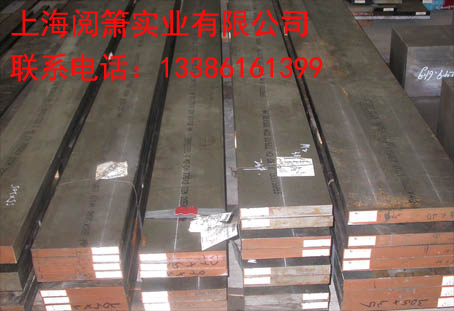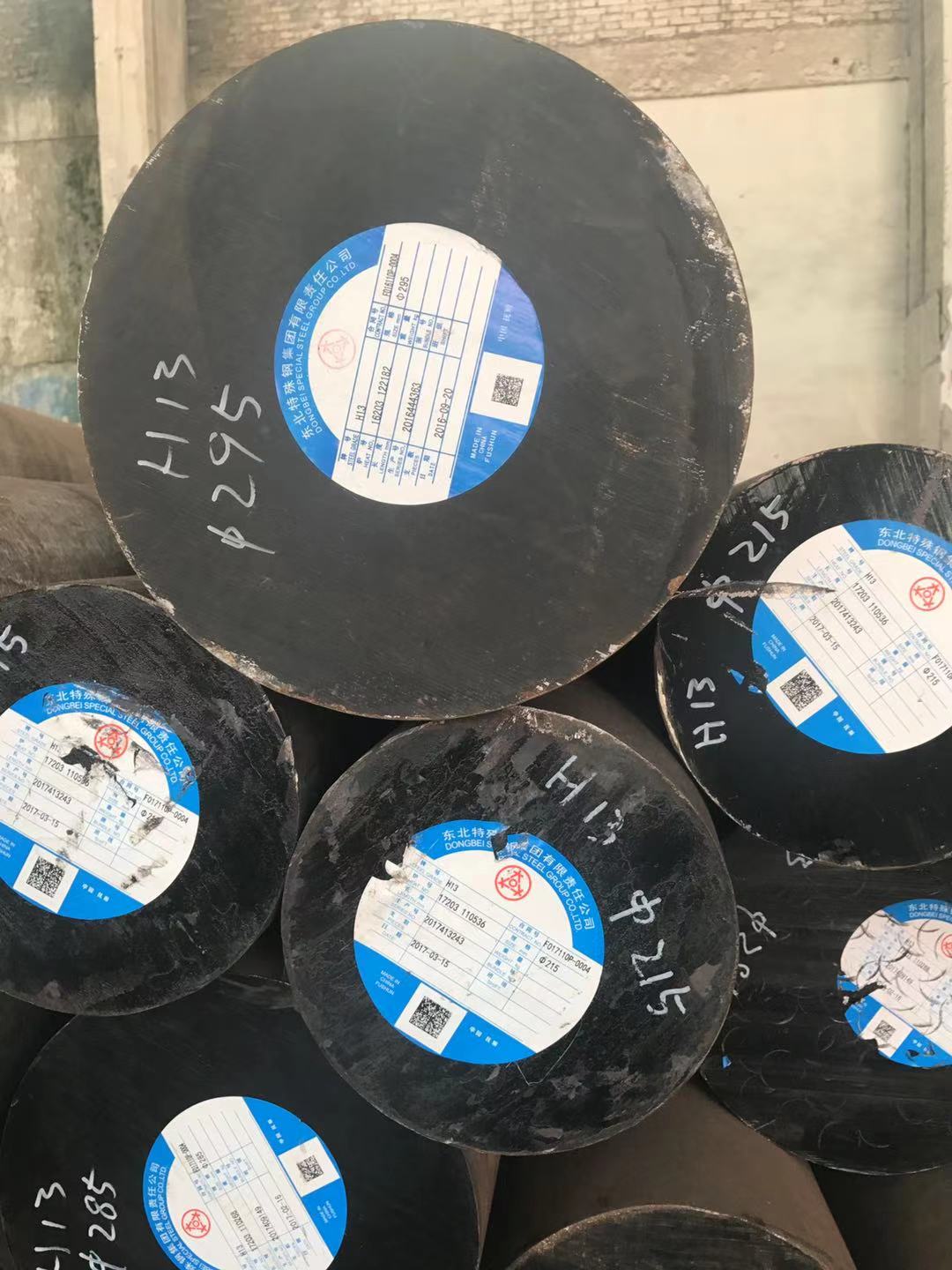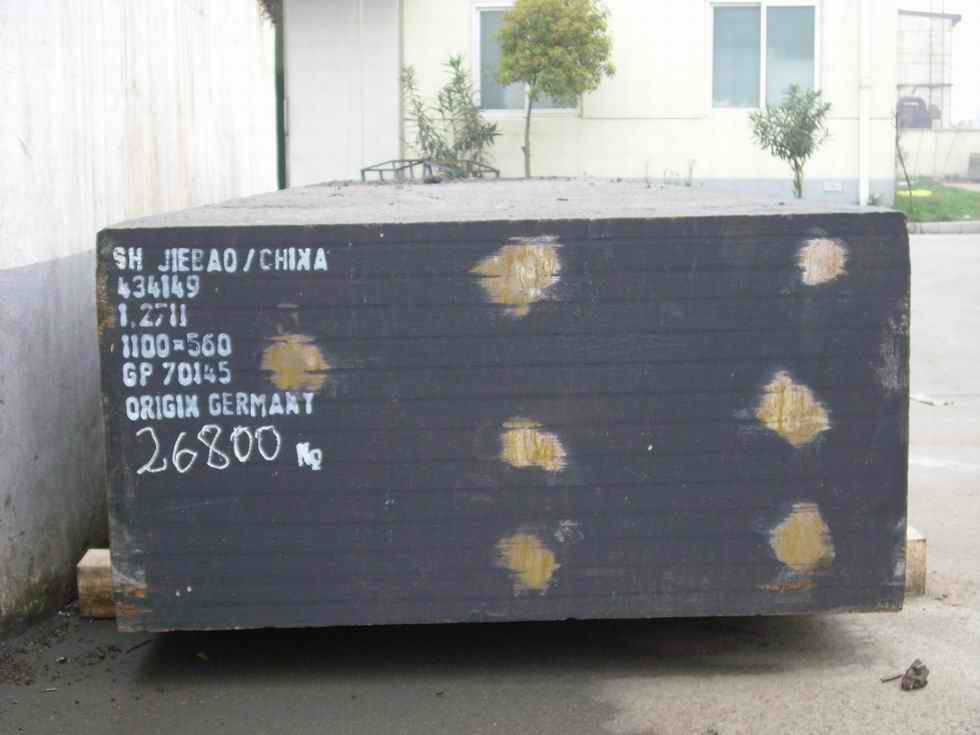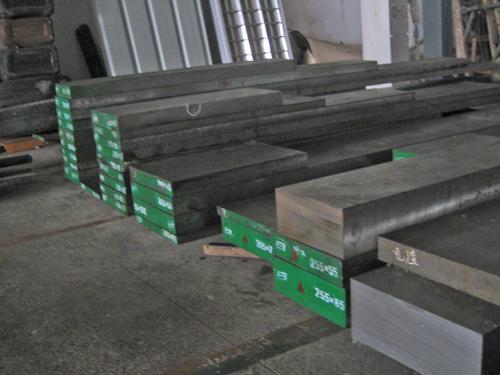Datong steel DC53 is Japan to improved new type of cold work die steel SKD11, its technical specifications in the Japanese industrial standard (JIS) G4404. It overcomes the insufficient SKD11 high temperature tempering hardness and toughness of weaknesses, will fully replace in the field of general and precision mould general cold work die steel SKD11 high toughness. Under the condition of the proper heat treatment are excellent strength and toughness, high temperature tempering hardness can reach 62-62 HRC.
DC53 toughness is more prominent in the cold work die steel, made of DC53 tools rarely appear crack and craze, greatly improving the service life. The residual stress after the wire-cutting processing, after high temperature tempering to reduce the residual stress. Therefore, large requirement and the precision of mould in wire-cutting processing after the cracks and deformation, be suppressed.
Practical features:
In wire-cutting processing advantages
DC53 USES:
Blanking die, cold forming dies, cold drawn mold
Forming roll, the punch
Precision stamping die.
Line cutting processing of fine blanking die stamping die and all kinds of purposes.
Hard processing material plastic deformation with tools.
Cold forging, deep drawing and thread rolling die.
other
High speed blanking punch, stainless steel plate punch.
The factory status: HB255
DC53 chemical composition
Manganese silicon carbon C: 1.00 Si: 1.00 Mn: chromium Cr 0.32:8.00 Mo Mo, V V 2.00:0.28
Basic performance
DC53 conventional heat treatment conditions, almost all residual austenite decomposition, generally can omit cryogenic processing, under the strong degree can still maintaining high toughness.
The experiment design
A DC53 after 1040 ℃ after quenching and 520 ~ 530 ℃ high temperature tempering, the hardness HRC can reach 62 ~ 63, is now commonly used among the highest in the cold work die steel, and good cutting, grinding, machining metamorphic layer of residual stress is small, very few residual austenite, carbide thin and uniform distribution. For die stress distribution is complex, some mold working parts need to have some special mechanical properties, if according to the standard of heat treatment process often cannot achieve ideal job performance requirements, through heat treatment on hardness, toughness and wearability make proper adjustment of the basic characteristics of mould in order to achieve the best working condition. The quenching temperature and tempering temperature is the main process parameters of heat treatment, this paper studies DC53 tempered characteristics.
Two experiments, slightly changes of DC53 heat treatment specification, adjust the quenching temperature and tempering temperature for 6, 100 ℃, 200 ℃, 300 ℃, 400 ℃, 500 ℃, 600 ℃. 100 ℃ tempering to choose 101-2 type drying oven, the rest of the SX - 25-12 box type resistance furnace heating, each take two sample tempering temperature.
Hardness testing the metal rockwell hardness test, at room temperature, the HBRVU - 187.5 type cloth lowe optical hardness tester. Impact test using 10 mm x 10 mm x 55 mm without notch specimen, the JB30B impact testing machine, impact energy of 0.3 KN. M or 0.15 KN. M.
Results analysis
Hardness value
Three different points from each of each sample hardness measurement, it is concluded that the tempering temperature hardness value, integrated the hardness value of each sample, DC53 in 100 ~ 500 ℃ tempering, hardness value is not changed; When in 400 ℃ temperature tempering hardness slightly tall, general standard heat treatment after tempering hardness peak at about 520 ℃; After 600 ℃ high temperature tempering hardness have fallen sharply, the average hardness value is HRC of only 52.4, so the tempering temperature shoulds not be too high.
Impact toughness
After tempering, to grinding oxidation decarburization layer on the surface of the specimen, determine the impact value of each sample under different tempering temperature, the comprehensive impact value of each sample DC53 in 200 ℃ tempering, the average impact value reached more than 60 J/cm2. At 500 ℃ tempering, poor impact toughness, show some high temperature drawability. Above 600 ℃ tempering impact toughness is very good, but the hardness decrease, can not meet the use requirement.
The experimental results show that DC53 tempered overall stability is better, to a certain tempering temperature range, hardness and impact value changed little; During 400 ~ 500 ℃ tempering toughness drastically, temper brittleness occurs; Samples at 600 ℃ tempering, high toughness, impact value reached 85 J/cm2, but hardness fell sharply. In production, to some degree of hardness, high wear resistance requirement is not too high and tough requirement of cold work mould can be used high temperature tempering; Higher requirements of hardness, and high toughness of cold work mould, appropriate USES around 200 ℃ low temperature tempering. Other hardness and tempering temperature impact value can use appropriate method to calculate the (such as interpolation and approximation of function, etc.) to predict, with experimental verification. Quenching state carbide distribution is discontinuous thin strip in the sample, after 200 ℃ tempering carbide distribution is uniform, and almost non-existent in the organization big blocky carbides, so the toughness is better. Look from the fracture morphology, far less than 200 ℃ tempering organization of cleavage fracture step quenching state samples, 5000 times of metallographic nest toughness of fracture have small and shallow, shows that it has a certain toughness. After tempering, the residual austenite transformation is full, carbide thin and uniform distribution, increase the toughness.
conclusion
Manner appropriate adjustments after quenching temperature, DC53 at 200 ℃ tempering hardness and impact toughness is higher; During 400 ~ 500 ℃ tempering hardness is higher, toughness drastically; At 600 ℃ tempering high impact toughness, hardness dropped significantly.
This shape of complex precision punching die, the trimming die, cold rolling wheel and other advanced appropriate USES low temperature tempering process, the working parts of the mold to get high hardness, high toughness, good wear resistance, high strength, which can effectively extend the service life of the mold, to prevent excessive wear, deformation, cracking and other early failure phenomena.
3. The impact load large complex mold to the low quenching high return process, in order to get higher impact toughness, prevent mold to produce the phenomenon of brittle fracture
The main features
(1) by cutting, by abrasive is good. Is cutting, grinding properties are better than SKD11, so machining tool life is longer, processing hours a province.
The advantage of (2) on the heat treatment Can quench hardening is higher than SKD11, so can improve the hardness of defect in vacuum heat treatment.
(3) in wire-cutting processing advantages Through high temperature tempering can reduce residual stress and eliminate the residual voss Tian Tie, can prevent the cutting processing of cracks, deformation.
(4) the advantage of on the surface hardening treatment Surface hardness is higher than SKD11 after surface hardening treatment, thus can improve the performance of the die.
(5) the advantage of on the repair welding operation Because of preheating and postheating temperature lower than SKD11, so repair welding operation is relatively simple. Features: general cold work die steel, high hardness, high toughness DC53 die steel
DC53 mechanical properties
Hardness: annealing, 255 ~ 210 hb, quenching, p 62 HRC
DC53 main use
After high temperature tempering, as HRC63, is advantageous in wire-cutting processing of fine blanking die stamping die and all kinds of purposes.
Hard processing material plastic deformation with tools.
Cold forging, deep drawing and thread rolling die.
High speed blanking punch, stainless steel plate punch




